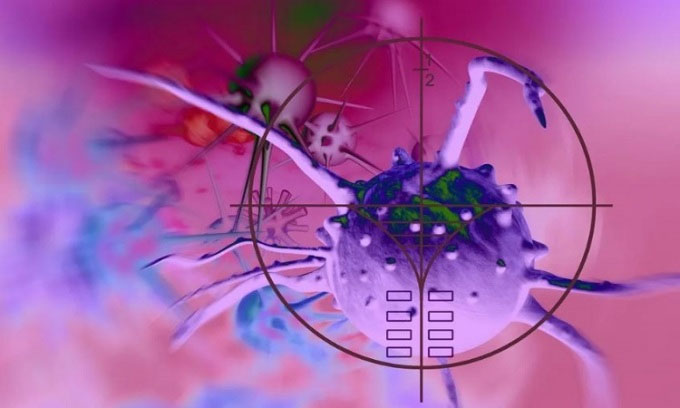Japanese scientists use worms to kill cancer cells

The drug-carrying roundworm in a hydrogel shell kills cancer cells.
Japanese scientists use microscopic worms called nematodes to deliver drugs to their targets via hydrogel envelopes. Roundworms usually live in soil or other environments. In some cases, they can enter the human body. Anisakis simplex, a marine nematode that can live in humans when ingested, is particularly fond of cancer cells.
"Anisakis simplex can detect 'smell' and attach to cancer cells," said Wildan Mubarok, lead researcher. "This led us to wonder if they could be used to deliver therapeutic drugs directly to cancer cells inside the human body."
To explore this possibility, the team first developed a system to wrap hydrogel shells around roundworms by dipping them in a series of solutions containing chemicals that bind together, creating a gel-like coating all over the surface. Worms. Basically, the process gives birth to a shell about 0.01 mm thick that hugs the worm's body in 20 minutes. According to study co-author Shinji Sakai, the shell doesn't affect the nematode's ability to survive, and is elastic enough for the worm to keep moving, looking for odors and chemical cues.
Next, the researchers inserted the useful molecule into the shell, and found that this protected the nematodes from ultraviolet light or hydrogen peroxide. Furthermore, the hydrogel coating may contain anti-cancer drugs. Protected by a hydrogel shell, the roundworm can transport and deliver drugs that kill cancer cells in vitro.
With the highly adaptive hydrogen shell, this nematode-based system holds the promise of not only delivering drugs to cancer cells in patients, but also have many potential applications in other areas such as the delivery of beneficial bacteria. to the roots.
- Breakthrough kill metastatic cancer cells
- Singapore discovered how to kill new cancer cells
- Russian and Swedish scientists have found a way to kill cancer cells
- Can we kill cancer cells when they're sleeping?
- Test virus 'kill cancer cells'
- Technology causes cancer cells to destroy themselves
- 8 foods help kill cancer cells
- Develop nanotechnology to kill cancer cells
- Detection of cancer by worms and urine
- Creating cells to kill tumors
- Turn stem cells into cancer machines
- Cannabis can kill cancer cells
 Why is Australia the country with the highest cancer rate in the world while Vietnam ranks 100th?
Why is Australia the country with the highest cancer rate in the world while Vietnam ranks 100th? New drug causes cancer to 'starve'
New drug causes cancer to 'starve' Common cancers in men
Common cancers in men America's incredible discovery: The most feared cancer cell is love
America's incredible discovery: The most feared cancer cell is love